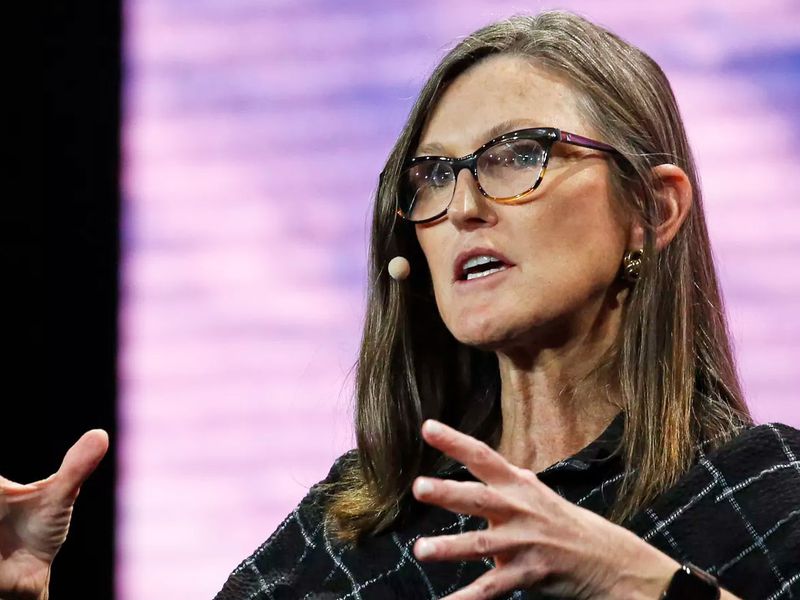We Won’t Ever Think About the Financial System the Same Way
We Won’t Ever Think About the Financial System the Same Way
Lex Sokolin, a CoinDesk columnist, is Global Fintech co-head at ConsenSys, a Brooklyn, N.Y.-based blockchain software company. The following is adapted from his Future of Finance newsletter.
For the first time in a long while, I find myself speechless.
This writing was always about the creativity of entrepreneurs in the face of a monolith. That monolith was the financial incumbents. That innovation was human ingenuity across AI, blockchain, and digital experiences, working on beautiful progress in the face of rational skepticism.
Today, we just need the monolith to stand. And we need the entrepreneurs to endure to come back another day.
Right now, nobody is thinking clearly. There may be plans, and math, and bailouts. We have made a global choice – save lives, burn the bridges. Like the Russians retreating into the frozen country from Napoleon, destroying stocks and supplies along their way to starve the French, we are hunkering down in isolation to starve the coronovirus. As if a virus cares for this logic.
To save our lives, we have had to sacrifice our economic heart – the one that brings food, community, employment, and other sustenance to billions. There was no choice. It is worth pausing on the strata of this impact.
First, we have the individual. Individuals produce and consume. Most produce, that is, add to GDP, as employees of companies. They consume largely based on income and wealth levels. Let’s do a quick back-of-the-envelope. Of the 330 million people in the US, 160 million people are in the labor force. There are 8 million households with children under the age of 3, another 10 million households with children under the age of 5, 15 million under the age of 11, and another 15 under the age of 17 (source). So that’s about 45 million households who are now at home with kids, and I’ll just assume that 1 parent in the household is no longer able to work.
To save our lives, we have had to sacrifice our economic heart.
Let’s simplify and say 40 million people out of 160 million people will exit the labor force for the time of contagion. In the case of a three month quarantine, we have just created 25 percent unemployment for 25 percent of the year, ignoring all the associated friction costs. Unemployment claims per week are already higher than in 2008.
US GDP is about $20 trillion per year. Cut that by 25 percent, and you get $4 trillion. This is why the Congressional rescue package is in the $2 trillion range, and not the smaller billion-sized actions that were previously considered. Even if you redirect $2 trillion into supporting consumer spending and making sure people have some type of safety net, there are existential complications.
For example, where would those $2 trillion have gone instead? Likely lower priority projects, like building the best ICBM, but jobs are on the line no matter what. If you just print the money, you devalue the purchasing power of existing money, and just re-distribute the losses politically. That may still be our best answer.
The fiscal stimulus is not the only thing we need, and the follow-on effects on the markets can again create systemic peril. To that end, we should pay close attention to the actions of the Fed. As of Monday, it planned to create a repurchase program for $500 billion of Treasuries and $200 billion of mortgage backed securities. This already happened in 2008 as a backstop to souring financial instruments.
More notable is the Primary Market Corporate Credit Facility and the Secondary Market Corporate Credit Facility to support the bond markets. This program could allow the Fed to be a direct underwriter in primary issuance, as well as a liquidity provider in a secondary market. Put simply – if you are Walmart, you can borrow from the Fed. Or if your Walmart $100 million bond comes due, you can refinance it. The key is that instead of enabling banks to do this activity, the Fed is taking on the account.
The Fed is lending to industry, side stepping banking infrastructure to make a faster, direct impact. This opens up an uncharted path for CBDCs.
One argument against Central Bank Digital Currencies that we often hear is that governments do not want to be the entity providing financial accounts to businesses and consumers. This would wipe out parts of the banking industry. It would also turn finance into a version of the Post Office. Such logic implies instead that banks should sponsor accounts, and governments should back the banks. But now is a crazy time!
The Fed is lending to industry, side stepping banking infrastructure to make a faster, direct impact. This opens up an uncharted path for CBDCs, especially as they relate to institutions. And if we have sovereign-backed blockchain networks, I would expect to see the rest of tokenized and decentralized finance eventually being ported over to connect to that infrastructure. It’s a small silver lining, but I won’t turn away even small rays of the Sun.
Once we have some semblance of normalcy and have regained control over the pandemic, there is still the question of what remains. Moscow was burned for Napoleon so that no food was left, and his armies starved and froze. Will our industry be similarly ravaged? The key question in my mind is about small businesses and startups. According to JP Morgan, the average business has 27 days of cash on hand, before it defaults and dies.
They are all dead in a month. The quarantine wipes all of them out.
Somebody has to take it on the chin instead. Somebody has to take a haircut on their wealth to maintain employment, small business, and retirees. The world’s balance sheet needs to be written down 10 percent, 20 percent, 30 percent, and more. The landlord who is expecting rent from the coffee shop is going to extract rent until the coffee shop goes belly up (which is soon), and then the landlord itself will start to accrue losses. Why is this a problem? Because the landlord is in debt too.
What looked like 35 percent debt to market ratios (i.e.., $35 of debt for every $100 of value) will look like 50 percent ratios (i.e., $35 of debt on the new $60 market value). Investors accrued lots of debt because it was cheap, and that also made market prices go up, since everything was easy to finance.
Do you think people will want to pay rent on commercial real estate or work from home on Zoom? This is why SoftBank is backing out of trying to rescue WeWork, opting instead to save the $3 billion+ of capital.
So naturally, the buck stops with the banks. The banks will be forced to suspend interest accruals and payments on debt, meaning narrow profitability will tank. They will have to write down the value of their collateral, and risk not holding enough regulatory capital. They will need to lower leverage and deal with the chance of bank runs, as people withdraw money to afford living their daily lives.
But remember that banks are mandated by government to have certain amounts of capital, and to underwrite risks of only a certain quality, and that their liquidity and credit provision is what makes the financial world go around. If it were your money, would you lend to your neighborhood coffee shop with a fat rent check and an indefinite pandemic threat?
No, you wouldn’t.
By now, what you are hopefully seeing is that the entire system is closely interwoven. People, small businesses, large institutions, banks, governments — you can’t squirrel away the damage caused by the coming recession and market destruction. You can only redistribute it, and prioritize it.
You cannot delegate entrepreneurship, kindness, and trust to the State, the Federal Reserve, Goldman Sachs, Facebook, the European Union, or the world’s governments.
To do that we need principles, vision and strength. We need to know what is important to us and the nation, and what our people’s true beliefs really are. We need to have healthy governance, trust in the elected body, and a spirit of neighborhood.
I don’t see how we will get there in time. What we will get out of this crisis, however, is a new system of beliefs. I remember going through 2008, working at Lehman at the time and standing at the skyscraper window the weekend when everything fell apart. It tooks years after that moment, but my own view of the infallibility of our institutions evaporated away. That feeling, that there is nobody there as a backstop you can really trust, was liberating. It means that you might as well do it yourself.
Since 2008, many fintech vectors have been working on empowering people to have this ability. We can create decentralized networks according to need. We can move money and assets without ever touching a commercial enterprise. We can exchange information, data, and technology seamlessly.
This has been recently blocked by (1) the need for venture exits, creating behemoth messes of B2C companies, and (2) stubborn regulation that enforces a world where protecting the consumer results in protecting the most conservative banks. Both of these barriers will soon shatter.
I hope that very many people will learn this lesson from the pandemic. You cannot delegate entrepreneurship, kindness, and trust to the State, the Federal Reserve, Goldman Sachs, Facebook, the European Union, or the world’s governments. Yes, they have a burden to bear in saving us from calamity. They will do it with bureaucracy and power trading, saving themselves first. We have to save ourselves, so let’s do it with grace.
Disclosure Read More
The leader in blockchain news, CoinDesk is a media outlet that strives for the highest journalistic standards and abides by a strict set of editorial policies. CoinDesk is an independent operating subsidiary of Digital Currency Group, which invests in cryptocurrencies and blockchain startups.









